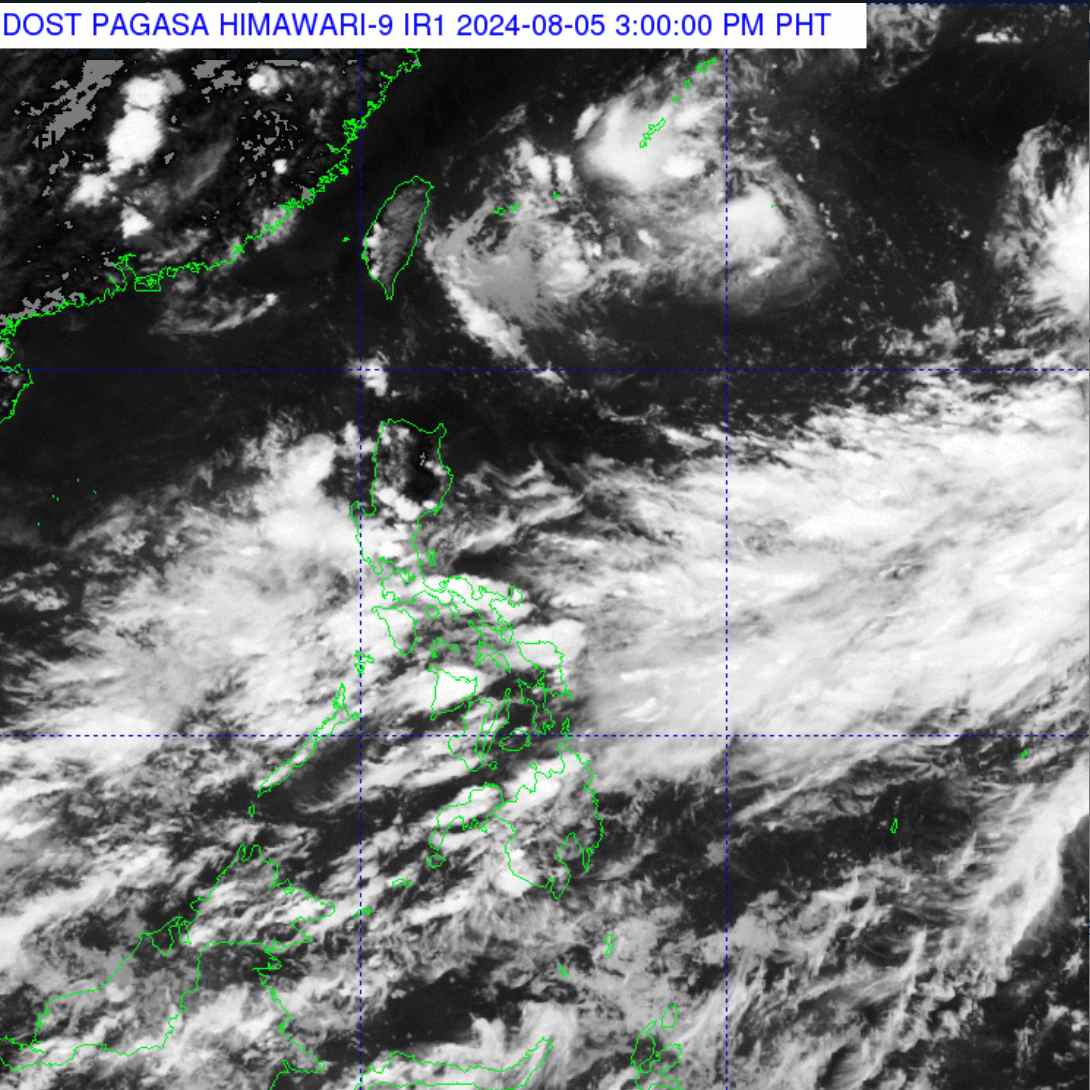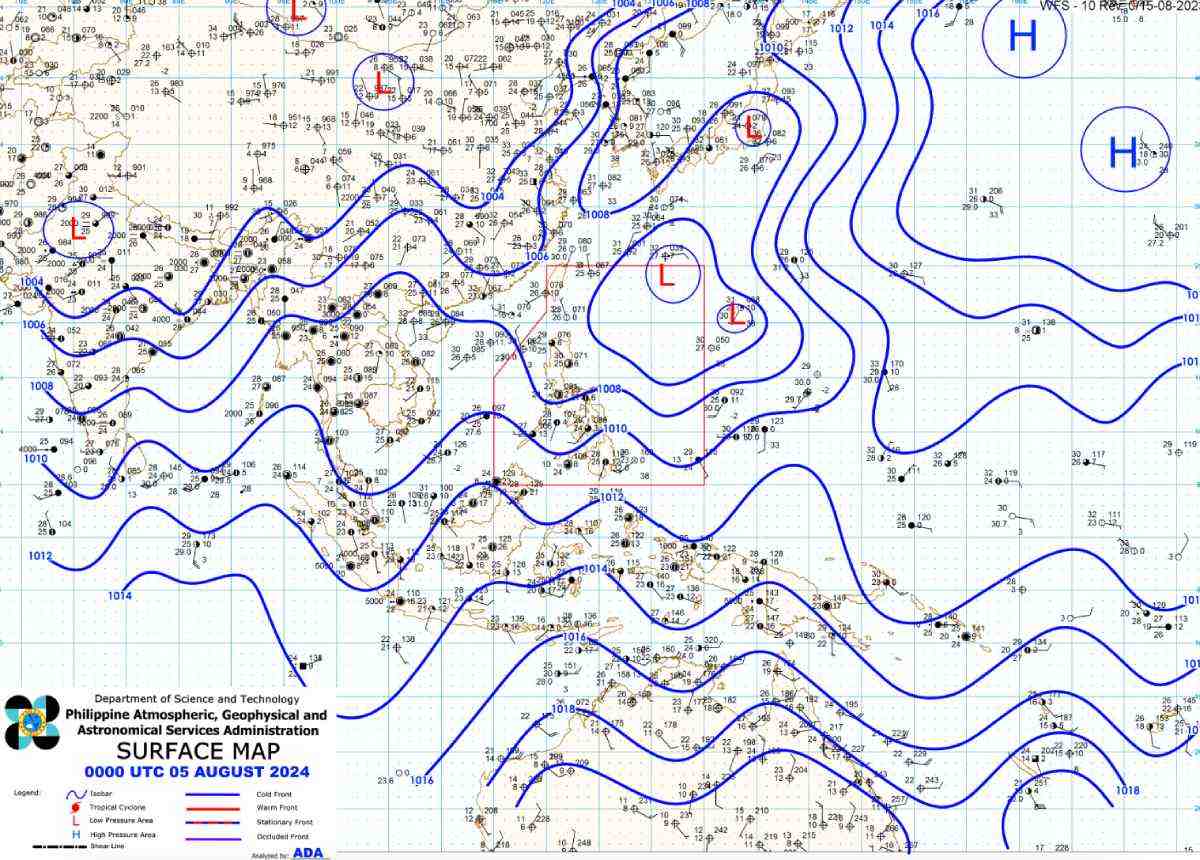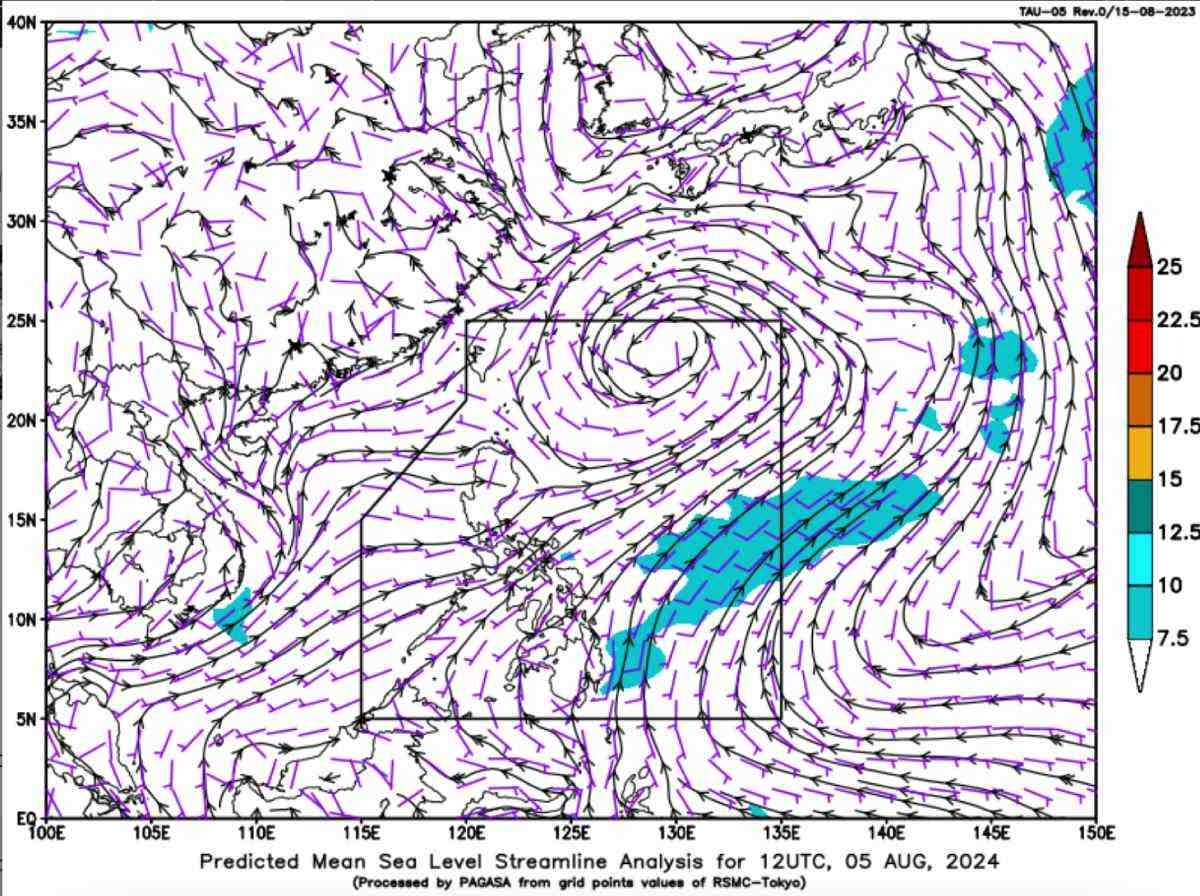On August 5, the Philippine Atmospheric, Geophysical and Astronomical Services Administration (PASAGA) said it was closely monitoring two low pressure areas detected inside and outside the Philippine surveillance area (PAR).
At 3:00 a.m. on August 5, the location of the first low pressure center was at about 24.1 degrees north latitude, 132.5 degrees east longitude, 1,155 km east-northeast of the northern tip of Luzon. A second depression is being tracked just outside the vicinity, in eastern Luzon.
PASAGA weather forecaster Robert Badrina said that low pressure has not yet had a direct impact on the Philippine weather situation. "But we are closely monitoring these two depressions" - Mr. Badrina said.

Even so, the southwest monsoon is affecting most parts of the Philippines, especially Palawan, Visayas and Mindanao.
The southwest monsoon is likely to cause rain and thunderstorms in some areas of the country, PASAGA warned.
In the weather forecast on the afternoon of August 5, PAGASA said that scattered rain and thunderstorms are expected to occur in Zambales, Bataan, Occidental Mindoro, Palawan, Western Visayas, Negros island area and Central Visayas until August 6.

The southwest monsoon also causes isolated showers or thunderstorms over Mindanao, Cavite, Batangas and the rest of Mimaropa and Visayas.
Metro Manila and the rest of Luzon will be cloudy with localized showers or thunderstorms.
Severe thunderstorms can also cause flash floods or landslides, PAGASA warned.
Seas were mild to moderately rough, with wave heights ranging from 0.6 to 2.1 meters.

Previously, PASAGA said that 2 to 3 tropical storms are expected to form or enter the Philippine forecast area in August.
In July, two tropical storms, Typhoon Butchoy (international name: Typhoon No. 2 Prapiroon ) and Typhoon Carina (international name: Typhoon No. 3 Gaemi), attacked the Philippines.
Super Typhoon Gaemi killed at least 39 people in the Philippines. More than 1.2 million families, equivalent to nearly 4 million people in many areas, have been affected.
The Philippines has the highest disaster risk among countries and territories vulnerable to natural disasters.
This Pacific archipelagic nation stretches 1,850 km from north to south and is right in the path of many storms. The country also lies on the Ring of Fire, making it at risk of earthquakes and volcanic eruptions.
PAGASA forecasts that about 13 to 18 tropical storms will make landfall in the Philippines in 2024.











